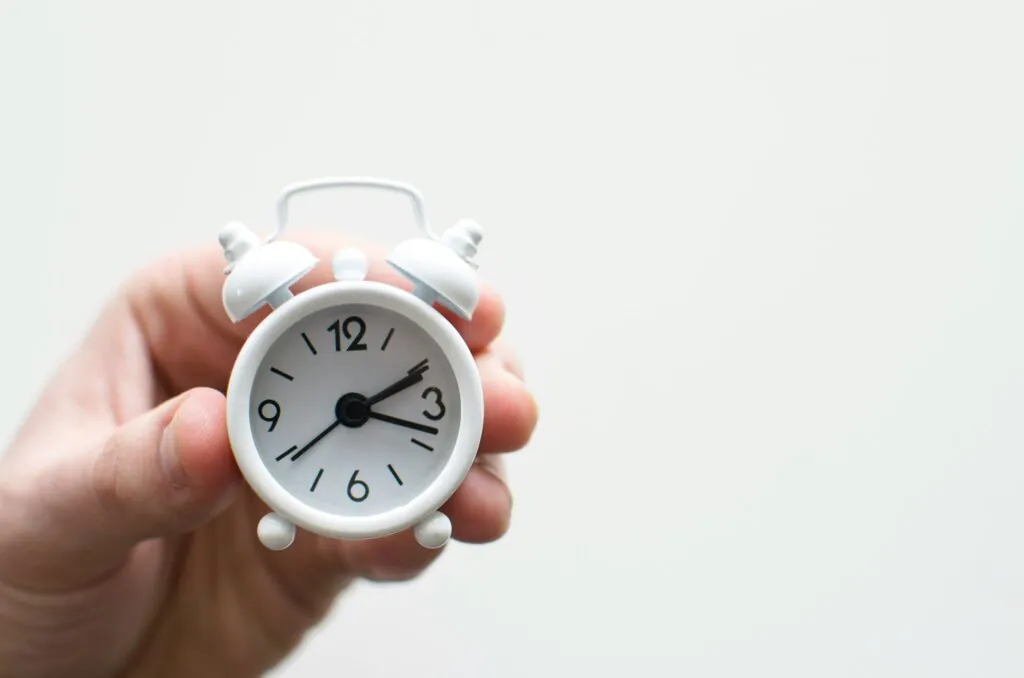Philadelphia Ladders and Scaffolding Defects Lawyers
If you or a loved one has been seriously injured due to a defective ladder or scaffolding accident, you may be entitled to significant compensation. At Fulginiti Law, our experienced Philadelphia ladders and scaffolding defects lawyers specialize in ladder and scaffolding defect cases, helping victims navigate complex legal claims to seek justice and fair compensation.
Construction sites and workplace environments are often hazardous, but injuries resulting from defective ladders and scaffolding are preventable. Whether caused by manufacturing defects, improper assembly, or poor maintenance, these accidents can lead to devastating consequences, including severe injuries and financial hardships. Our firm is dedicated to advocating for your rights and ensuring responsible parties are held accountable.
Why Choose Fulginiti Law for Ladder and Scaffolding Defect Cases?
At Fulginiti Law, we bring a unique combination of experience, dedication, and a track record of success to every ladder and scaffolding defect case we handle. Here’s why clients throughout Philadelphia trust us:
- Proven Experience: With over years of successful legal representation in product liability and construction injury cases, we understand the complexities of defective equipment claims. We have helped numerous clients secure substantial compensation for their injuries.
- Dedicated Focus: We specialize in ladder and scaffolding defect claims, giving us in-depth knowledge of industry safety regulations, product liability laws, and construction site standards. This specialization allows us to build strong cases that maximize our clients’ chances of success.
- No Win, No Fee: Our contingency fee basis means you don’t pay unless we secure compensation for you. This approach ensures that our legal services are accessible to everyone, regardless of financial situation.
- Personalized Legal Representation: Our Philadelphia ladders and scaffolding defects lawyers recognize that each case is unique, and we tailor our strategies to meet your specific needs and goals. Our team provides compassionate, client-centered support throughout the legal process.
Common Causes of Ladder and Scaffolding Accidents
Accidents involving defective ladders and scaffolding are often preventable and occur due to various reasons, including:
Design Flaws and Manufacturing Defects
Defects in the design or manufacturing process can result in structurally weak ladders or scaffolding that are prone to collapse or malfunction. This includes weak materials that cannot support the advertised weight capacity, poor design structures leading to instability or imbalance, and improper assembly guidelines causing potential misuse.
Faulty Assembly or Installation
Improper installation or assembly can compromise the safety of ladders and scaffolding. This is often due to inadequate instructions provided by manufacturers, missing components or parts leading to instability, and incorrect assembly by construction workers due to misleading guidelines.
Lack of Safety Features
Many accidents occur because ladders and scaffolding lack essential safety mechanisms, such as non-slip surfaces to prevent falls, stabilizing features to secure the equipment in place, and safety railings and harness hooks on scaffolding to protect workers at heights.
Misleading Labels or Warnings
Manufacturers are required to provide accurate safety warnings and usage instructions. Accidents often happen when labels misstate weight limits, leading to overloading, or when warnings are unclear or absent, resulting in improper usage.
Poor Maintenance or Wear and Tear
Regular maintenance is essential for ensuring equipment safety. However, accidents can occur due to overuse or prolonged exposure to harsh weather conditions causing material fatigue, lack of routine inspections leading to undetected damage, and failure to repair or replace defective or worn-out parts.
Injuries Sustained from Defective Ladders and Scaffolding
Accidents involving defective ladders and scaffolding can result in severe and sometimes life-altering injuries. The nature of these accidents often leads to significant physical, emotional, and financial burdens. Common injuries include:
Traumatic Brain Injuries (TBIs)
Falls from ladders or scaffolding can cause severe head trauma, leading to concussions or contusions affecting cognitive functions, skull fractures requiring complex medical interventions, and long-term neurological issues such as memory loss or impaired motor skills.
Spinal Cord Injuries
High-impact falls can result in serious spinal cord damage, including paralysis (paraplegia or quadriplegia) leading to permanent disability, herniated discs causing chronic pain and limited mobility, and nerve damage affecting sensation and muscle function.
Broken Bones and Fractures
Commonly affected areas include arms and legs, often requiring surgeries and physical rehabilitation, rib fractures leading to complications like punctured lungs, and pelvic fractures affecting mobility and daily activities.
Internal Injuries and Organ Damage
The force of impact can cause serious internal damage, including internal bleeding and damage to vital organs, punctured lungs, or ruptured spleens requiring emergency surgery.
Lacerations and Soft Tissue Injuries
Sharp edges or broken components can cause deep cuts and abrasions leading to infections or scarring, as well as torn ligaments and muscle damage affecting movement and strength.
Emotional and Psychological Trauma
Beyond physical injuries, victims may suffer from post-traumatic stress disorder (PTSD) and anxiety, depression due to chronic pain or disability, and emotional distress impacting overall well-being and relationships.
Who is Liable for Ladder and Scaffolding Injuries?
Determining liability in ladder and scaffolding defect cases is crucial for a successful legal claim. Potential liable parties include:
Manufacturers and Distributors
If the ladder or scaffolding was defectively designed, manufactured, or labeled, the manufacturer or distributor can be held responsible under product liability laws.
Employers or Site Supervisors
Employers have a legal obligation to provide safe equipment and adequate training. They can be held liable if faulty equipment was knowingly provided or if proper safety measures were not implemented or enforced.
Contractors or Subcontractors
They are responsible for ensuring the proper installation and maintenance of ladders and scaffolding on construction sites.
Property Owners
If the accident occurred on unsafe premises, the property owner might be liable for not maintaining a safe environment.
Third-Party Negligence
Other parties involved in the construction process, such as equipment rental companies or maintenance contractors, can also be held accountable for negligence.
How to File a Claim for Ladder or Scaffolding Defects
Filing a claim for injuries caused by defective ladders or scaffolding involves several important steps:
- Seek Immediate Medical Attention
Your health and safety come first. Get medical treatment promptly to document the extent of your injuries with professional medical records and establish a clear link between the accident and your injuries for your legal case. - Report the Accident
Report the incident to your employer or the property owner, ensuring that an official accident report is filed. This document will be crucial for worker’s compensation claims if the accident occurred at a construction site and for establishing the time, location, and circumstances of the accident. - Preserve Evidence
Collect and preserve all evidence related to the accident, including photographs of the accident scene, defective equipment, and your injuries; witness statements from co-workers or bystanders who saw the incident; and medical bills, injury reports, and correspondence related to the incident.
Compensation for Ladder and Scaffolding Defect Injuries
If you’ve been injured due to a defective ladder or scaffolding accident, you may be entitled to compensation. At Fulginiti Law, we understand the physical, emotional, and financial impact these injuries can have. Our experienced legal team is dedicated to helping you secure the compensation you deserve so you can focus on recovery.
Medical Expenses
You may be entitled to compensation for medical costs, including emergency room visits, surgeries, rehabilitation, ongoing medical care, and long-term care expenses for permanent disabilities.
Lost Wages and Loss of Earning Capacity
Compensation may cover lost wages due to missed workdays and reduced earning capacity if your injury affects your ability to perform your job. You may also be entitled to compensation for loss of future income if you are permanently disabled.
Pain and Suffering
You can seek compensation for physical pain, emotional distress, mental anguish, and loss of enjoyment of life resulting from your injuries.
Disability and Disfigurement
If your injuries result in permanent disability or disfigurement, you may receive compensation for loss of mobility, disfigurement, and home modifications required for daily living.
Loss of Consortium
Family members may be compensated for loss of companionship, emotional support, and parental care if the injury affects relationships.
Wrongful Death Damages
If a loved one dies due to a ladder or scaffolding defect, compensation may include funeral expenses, loss of financial support, and emotional suffering.
Frequently Asked Questions (FAQs)
Who is liable for defective ladder or scaffolding injuries?
Liability may fall on the manufacturer, distributor, employer, contractor, or property owner, depending on the cause of the accident. If the equipment was defectively designed, manufactured, or labeled, the manufacturer or distributor can be held responsible under product liability laws. If the accident occurred due to improper maintenance, installation, or lack of safety measures, liability may rest with the employer, contractor, or property owner.
Can I file a lawsuit if I was injured at work due to a ladder or scaffolding defect?
Yes, you may be able to file a lawsuit depending on the circumstances. If the injury was caused by defective equipment, you might have a product liability claim against the manufacturer or distributor. If the injury occurred due to unsafe working conditions, you may be eligible for workers’ compensation or a personal injury lawsuit against a third party, such as a contractor or property owner.
What compensation am I entitled to for a ladder or scaffolding injury?
You may be entitled to compensation for medical expenses, lost wages, pain and suffering, disability, disfigurement, and loss of earning capacity. If a loved one was fatally injured, you may also be eligible for wrongful death damages, including funeral expenses and loss of financial support.
How long do I have to file a claim for a ladder or scaffolding injury?
In Pennsylvania, the statute of limitations for personal injury claims is generally two years from the date of the accident. However, deadlines may vary depending on the details of your case, so it is crucial to consult with our Philadelphia ladders and scaffolding defects lawyers as soon as possible to protect your legal rights.
What should I do immediately after a ladder or scaffolding accident?
Seek medical attention immediately, even if your injuries seem minor, as this provides necessary documentation. Report the accident to your employer or property owner and ensure an official accident report is filed. Preserve evidence by taking photos of the accident scene, equipment, and your injuries. Collect contact information from witnesses and keep records of medical bills, injury reports, and other related documents.
Contact Fulginiti Law Today
If you or a loved one has suffered from ladder or scaffolding defects, don’t wait. Contact Fulginiti Law today for a free consultation. Our Philadelphia ladders and scaffolding defects lawyers are dedicated to fighting for your rights and ensuring you receive the compensation you deserve.


